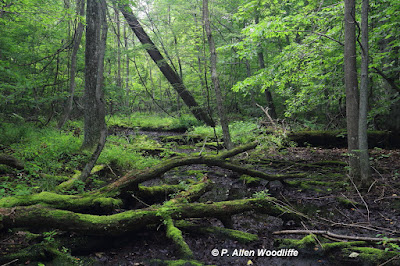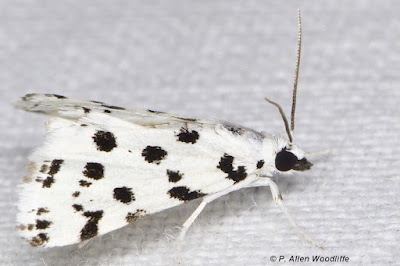This past week has been National Forest Week. I intended to do a post specific to this topic, but the week got away on me. However I will give a short nod to forests, since they are so incredibly important for a huge number of reasons.
It is always fun to explore them, as they have so much to offer. One of my main reasons to wander through them is for the inspiration they provide, experiencing their creation and diversity and providing a lot of stress relief. I know that many of you do the same.
Here are a few of my favourite forest photos.
It won't be long before this is the way many forests will look!
The trees are the giant inhabitants of a forest, of course. This next set of photos will feature some of the smallest, and least observed, inhabitants of a forest.
It will be no secret to regular readers of Nature Nuggets, that I am fascinated by moths, and other creatures that come to lights. The diversity is huge, and using a black light is often the only way to see them. While I have been reasonably active in trying to see as many of these night-time creatures as possible over the last few years, my efforts this year have been limited largely to my own yard as well as Rondeau Provincial Park. While my own yard does not qualify as true forest, there are parts of it that, on a very small scale, are forest like. In fact it was after we moved to our current location 34 years ago and planted many trees, that one neighbour wondered if we were trying to make it look like Rondeau, where we had moved from. Regardless, the creatures that follow are, for the most part, typical of forests in the area, although they have all been photographed in our yard.
Some are extremely small, being barely 5-6 mm in body length. The size of the weave in the cloth background will give a hint of the relative size.
 |
American Idia
|
 |
Banded Sunflower Moth
|
 |
Barberry Geometer
|
 |
Celery Looper
|
 |
Chickweed Geometer
|
 |
Dark-collared Tinea
|
 |
European Pine Shoot Moth
|
 |
Common Pug
|
 |
Hairnet Acleris
|
 |
Harnessed Tiger Moth
|
 |
Juniper Geometer
|
 |
Metallic Casebearer
|
 |
Bee Moth
|
 |
Oak Leafshredder Moth
|
 |
Painted Lichen Moth
|
 |
| Pearly Wood-Nymph |
|
 |
Polymorphic Pondweed Moth
|
This next one is considered quite rare in Ontario, being more of a western species.
 |
Rufous Crambid Moth
|
 |
Small Bird-dropping Moth
|
Almost pure white is this next one: the Snowy Urola, a member of the Grass-veneer group.
 |
Soybean Looper
|
 |
Speckled Xylesthia
|
This next one is one that is the first record for Chatham-Kent, the Spotted Peppergrass Moth.
 |
Three-lined Balsa
|
As mentioned, there are many non-moth species that arrive on the sheet, although I don't spend as much time photographing them. Some are just too small, being barely 3-4 mm in length! But some of the others that I have captured are as follows:
Leafhoppers are always fun to 'shoot'. Some are relatively large, such as this Eight-lined Gyponana, which is 7-8 mm n length.
One time when I was photographing a smallish moth, I noticed this tiny creature just below. It is a midge of the
Cricotopus genus, and barely 4 mm in length,
Plant bugs, such as this one in the
Lygus genus, are periodically found.
A highlight for me was to have one of these Round-headed Katydids come to my sheet. They can be either green, as this one is, or tan coloured. My first one was tan coloured and I found out that it was the first record for Ontario. I get them annually in the late summer, and I have seen them at Rondeau. Others have photographed them elsewhere in southwestern Ontario. One of the key characteristics to note is the black line just below the tip of its 'nose'.
Spiders come by occasionally, probably thinking that a light means insects, and insects mean a potential meal. This is a member of the Orb Weaver family.
I have lots more photos of ones I have photographed at Rondeau, not surprisingly, and I plan on highlighting some of the more interesting ones in a future post. Depending on the weather, I expect to try and do some more black lighting for another month, and some of the late season ones are hard to come by. Some are the result of arriving as migrants from the south, arriving on favourable winds, and then showing up at a light. I have photographed almost 800 species overall, but with about 3300 species known for Ontario, I have a long way to go!
If you would like to subscribe, or unsubscribe, to Nature Nuggets, send an email to: prairietramper@gmail.com



































No comments:
Post a Comment